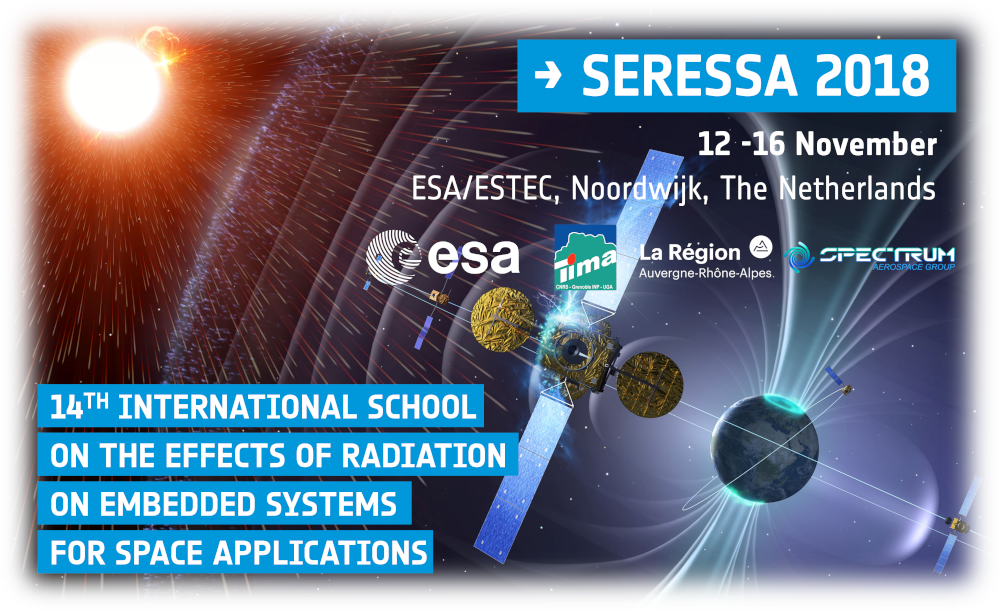In this talk, we will be discussed the practical use of formal based techniques, such as SAT, SMT and probabilistic model checker to analyze SEEs at logical and higher abstraction levels. Through examples, we will illustrate each approach and its benefits.
Fault injection is a widely used method to evaluate fault effects and error mitigation in a design. While not a replacement for standard Radiation- Hardness Assurance methodologies, it can provide valuable information in a quick and inexpensive manner. Moreover, recent developments have improved performance by several orders of magnitude, thus enabling the realization of extremely large fault...
This presentation describes a method devoted to SEU error-rate prediction for processor-based architectures. The proposed method combines results issued from fault-injection, performed at circuit by means of CEU (Code Emulated Upsets), to those issued from radiation ground tests. It allows predicting error rates without requiring radiation ground-tests for future applications. The approach was...
Most satellites use radiation-hardened microprocessors, as many organizations are concerned that a microprocessor failure could be catastrophic to the mission. Most radiation hardened microprocessors are not as capable as commercial microprocessors, and the instrument's performance might be affected by the microprocessor's capability. Commercial microprocessors can be useful for secondary,...
This work evaluates the SEE static and dynamic sensitivity of a single-chip many-core processor having implemented 16 compute clusters, each one with 16 processing cores. A comparison of the dynamic tests when processing-cores cache memories are enabled and disabled is presented. The experiments were validated through radiation ground testing performed with 14 MeV neutrons on the MPPA-256...
Carrier generation induced by pulsed-laser excitation has become an essential tool for the investigation of single-event effects (SEEs) of micro- and nano-electronic structures. The qualitative capabilities of this approach include, among others, sensitive node identification, radiation hardened circuit verification, basic mechanisms investigations, model validation and calibration, screening...
The ADC12DJ3200QML is an RF-sampling giga-sample ADC that can directly sample input frequencies from DC to above 10 GHz. In dual channel mode, ADC12DJ3200 can sample up to 3200-MSPS and in single channel mode up to 6400-MSPS. Programmable tradeoffs in channel count (dual channel mode) and Nyquist bandwidth (single channel mode) allow development of flexible hardware that meets the needs of...
The presented radiation detection device X-CHIP-03 is a monolithic silicon detection chip based on 180 nm SoI technology. The chip consists of square pixel cells with a 60 $\mu$m pitch forming an array of 64 x 64 pixels covering an active surface of 3.84 x 3.84 mm$^2$. X-CHIP-03 has two operation modes – hit counting mode and ADC mode dedicated to the measurement of deposited energy in...
The ATHENA mission is an on-going X-Ray spacing observatory project of ESA, dedicated to the scientific theme « The Hot and Energetic Universe ». The 12-meter telescope will work in a halo orbit around the second Lagrangian point (L2 Sun-Earth) during its 5 year lifetime at the end of the next decade. The X-Ray spectral imager on board, X-IFU, based on 3840 superconducting microcalorimeters...
In this work we summarize some recent experiments carried out at the three different irradiation facilities from the Centro Nacional de Aceleradores (CNA), using either gamma radiation from a Co-60 source, or protons and neutrons from the particle accelerators. In addition, the main characteristics of a new chamber which will be available at CNA in the near future and specially designed to...
I. ABSTRACT
The Single Event Upset (SEU) characterization of electronic components, requiring characteristics of radiation-hardness and employed in high-energy accelerators, relies on the knowledge of high-energy hadron cross sections typically measured with high-energy protons. Preliminary irradiation tests performed with an Americium-Beryllium (Am-Be) neutron source at CERN, demonstrated...
Pyxel [1] is a novel, end-to-end Python framework designed to host and pipeline analytical, numerical and statistical models simulating detector effects such as cosmic rays, noise sources, Charge Transfer Inefficiency, persistence, dark current and other radiation effects on images produced by CCD or CMOS-based imaging detectors. It is currently under development at the European Space Agency...
The SXRM is a concept of a multilayer cosmic radiation detector currently being developed at the FNSPE, CTU in Prague.
Its main objective is a determination of the incoming particles species, estimation of their energy using pattern recognition techniques and trajectories reconstruction.
The geometric layout is designed to be compact with dimensions of \mbox{$5 \times 5 \times 4.2$ cm$^3$}...

